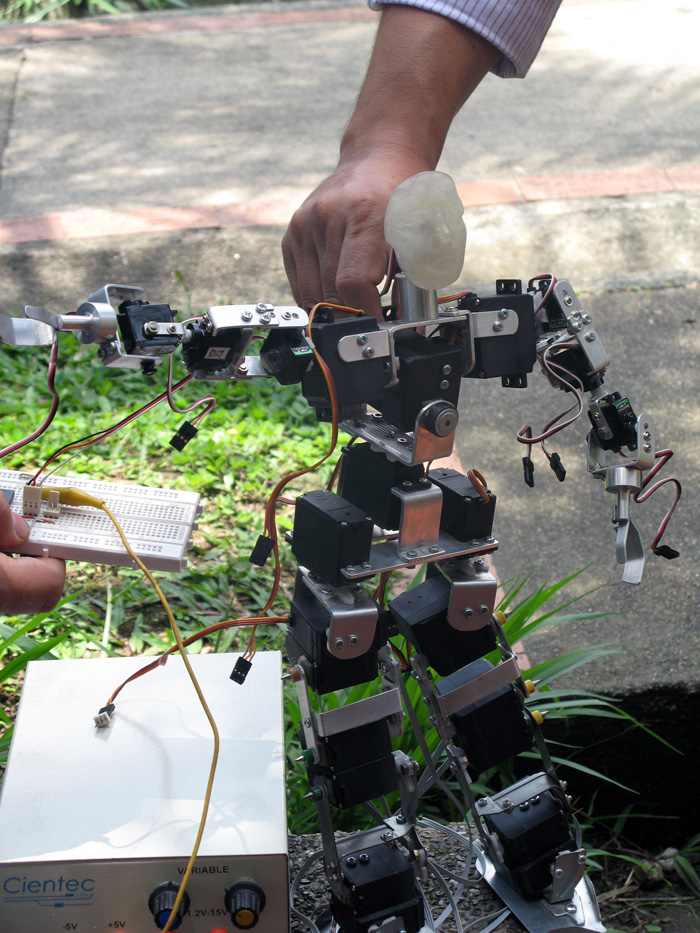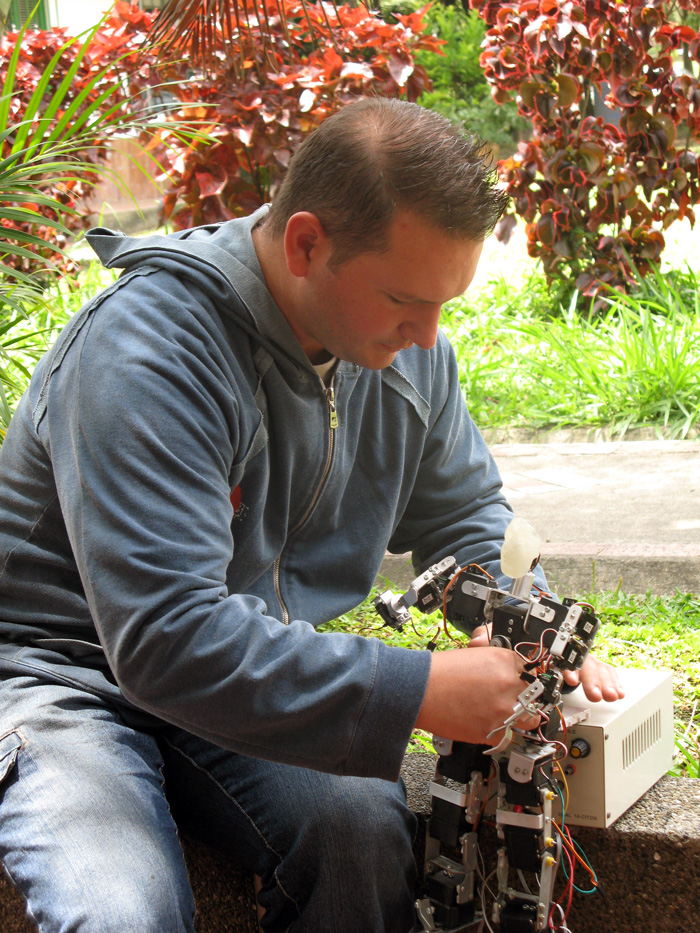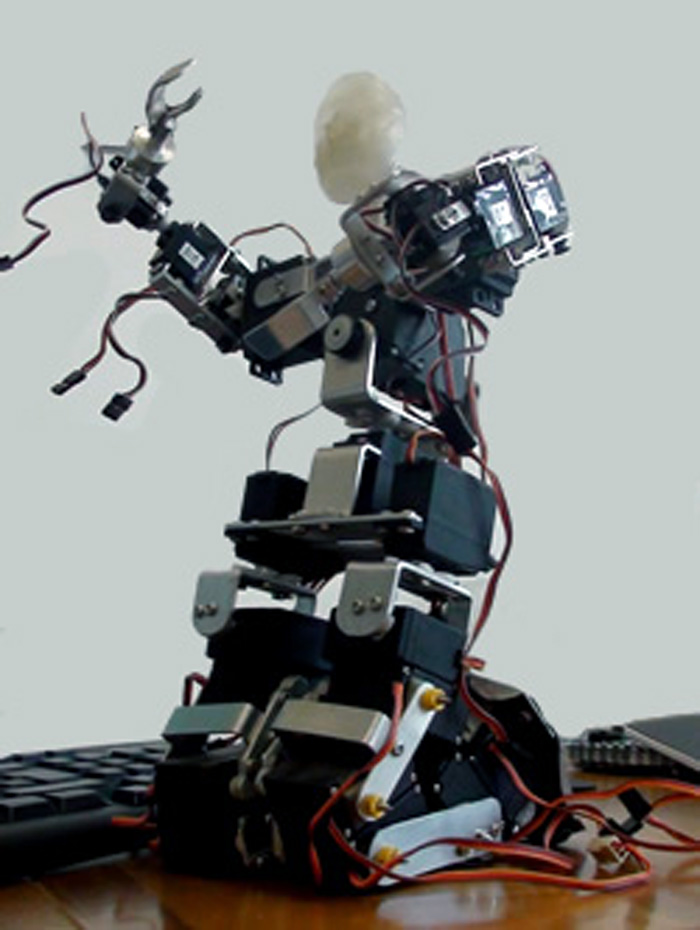This is an achievement of the Artificial Intelligence Research Group; a prototype made of 27 analogue servi-engines, controlled by a microcontroller, a technology which is becoming very powerful with the pass of time. It also counts on rigid parts made of aluminum, among other materials. The face, which is very similar of that of the main character of the movie I Robot, was made with a polyester resin.
This robot is part of a series of works that the research group is carrying out in the subject of educative robotics.
According to Jovani Jiménez Builes, professor of the Systems School of the Faculty of Mines, this is a methodology used to teach students a group of concepts related to electronics, systems, mechanical physics, among others, in a creative way.
"All this labor motivates students, not only at university level, but also in schools, and it is a good opportunity to make them feel interested in developing local technology in a creative way. This method teaches them to become self-taught, and to use knowledge that will be useful for the rest of their lives," mentioned Jiménez Builes.
Jomer Restrepo Vélez, a Physics Engineering student, explained that the control of the robot still needs to be perfected, since its legs movements need to be more complex.
"It was built with elements that were easy to get in the Colombian market. Then, we assembled all the materials to develop all the program, electronics, in order to accomplish the initial challenge that was making it walk, and then, using some technology of artificial intelligence, making it decide at random about its movements in an irregular environment," explained the developer.
This prototype is already known by some universities in Japan, such as University of Chiba and University of Nagoya. "We have established contacts with 11 labs in five universities in that country due to a technical and academic visit in 2009. The idea is to obtain knowledge from them and send some of our students there."
According to the professor, big efforts are being made in terms of robotics in Colombia, since several universities are working on this topic.
"Argentina, Chile, Brazil, Mexico, United States, and Canada are the leaders of robot construction for teaching," mentioned the professor.
 Correo Electrónico
Correo Electrónico
 DNINFOA - SIA
DNINFOA - SIA
 Bibliotecas
Bibliotecas
 Convocatorias
Convocatorias
 Identidad UNAL
Identidad UNAL






